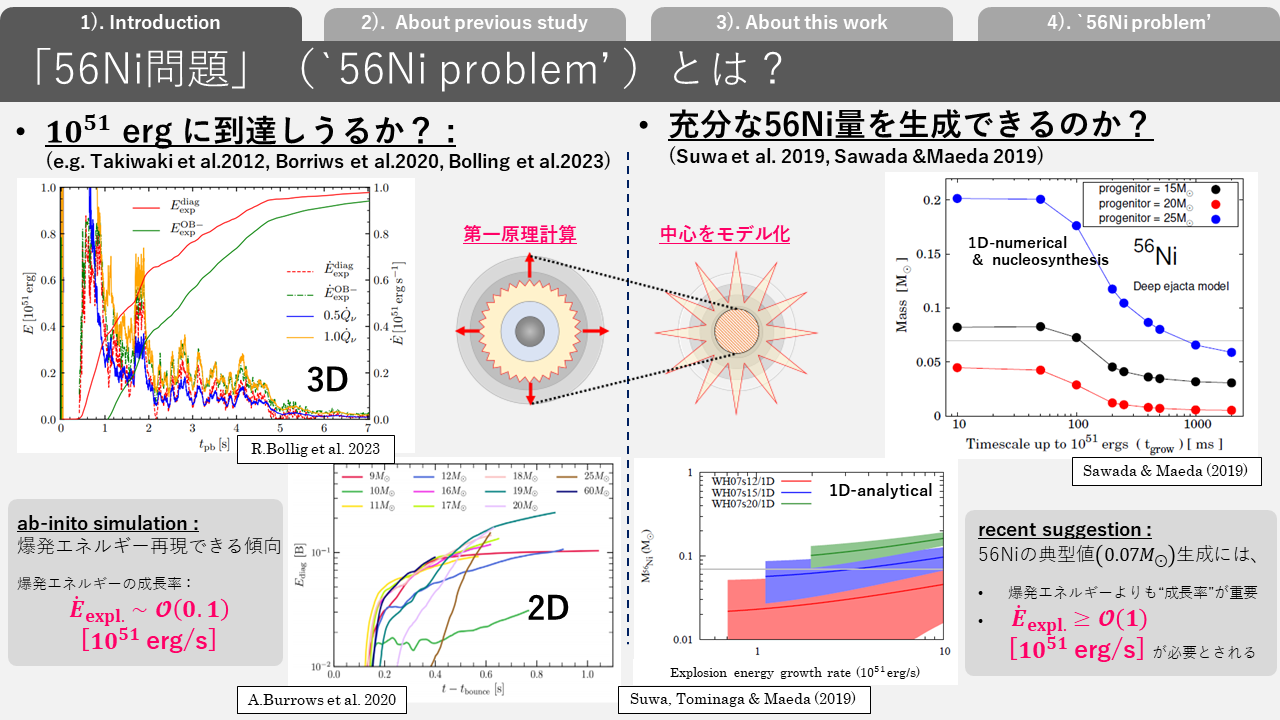Tsukuba Uchu Forum
134th Uchu Forum
Supernova explosions and the isotope $^{56}$N
Ryo Sawada
University of Tokyo
Abstract
A gravitational collapse supernova is an explosion of a massive star at the end of its evolution. The explosion mechanism of supernovae is an unsolved problem in astrophysics. Large-scale numerical simulation studies of supernovae overcame the "failure to reproduce the explosion" problem in the 2000s and the "failure to reproduce the explosion energy" problem in the 2010s, and have now reported results showing that supernova explosions can be reproduced when numerical simulations follow timescales longer than those expected in the past. Thus, it is now understood that "supernova explosions are driven by longer timescales (>1 sec) than in the classical picture," but it is not obvious whether this slow explosion picture (>1 sec) is consistent with observations. A clue to measuring this observational validity is the amount of isotope 56Ni synthesized inside the supernova. Since the amount of isotope 56Ni is the source of the observed supernova brightness, sufficient synthesis of this nucleus is essential for observational consistency. We performed elemental synthesis calculations with a phenomenological explosion model that treats the explosion timescale of the supernova as a parameter, and found that "slow explosions (>1 s) cannot reproduce the observed 56Ni abundance of the supernova" (Figure 1). Although this study is based on a simple modeling approach, it is a conclusion that presents an essential problem in the explosion mechanism of supernovae: the 56Ni problem. In this talk, I will introduce the basics of elemental synthesis, the role of the radioisotope 56Ni in supernovae, and my own research on the "56Ni problem" in supernovae.


 和 英
和 英